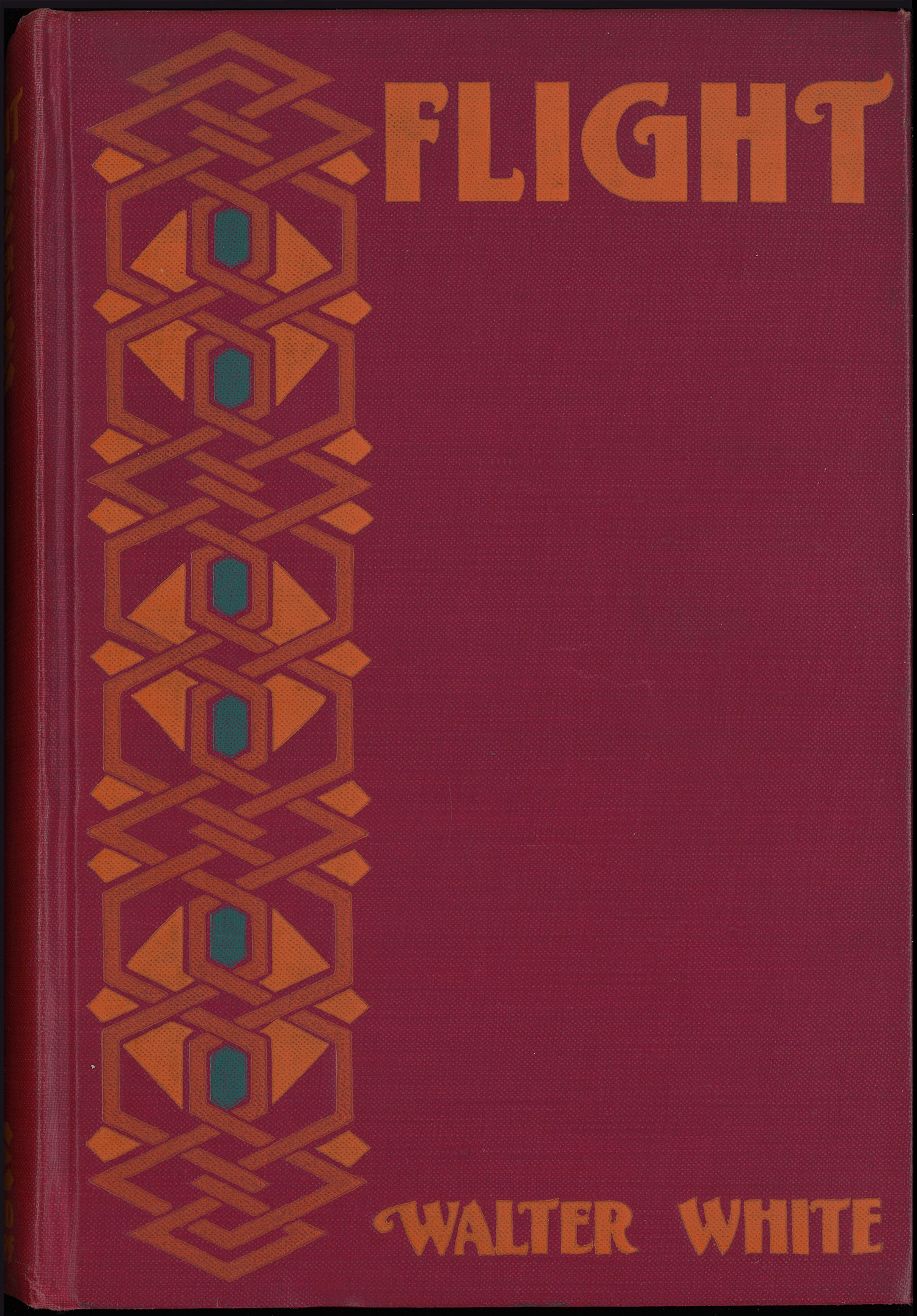Flight

Flight
Walter White
New York: Alfred A. Knopf, 1926
Sam Fleming Southern Civilization Collection
Vanderbilt University Special Collections
Walter Francis White (1893-1955) was a Harlem Renaissance writer and civil rights activist, who led the National Association of Colored People (NAACP) from 1929 till 1955. He received international renown for his work against mob violence, personally investigating forty-one lynchings and eight race riots.
During the twentieth century, the “one-drop rule” or “hypodescent” was prevalent as a legal principle of racial classification that categorized anyone with at least one Black ancestor as Black. White, who had ancestors of both European and African descent, would have been legally classified as Black. He could, however, pass as white with his light complexion and blond hair. However, he chose to identify as African American and was vocal about being Black.
The 1926 novel Flight touches on themes of passing, Black migration, urbanization, and segregation. It tells the story of Mimi Daquin, a light-complexioned African American woman. Her social position changes as she moves to various cities across the South and Northeast United States and participates in different class dynamics and racial relationships. The book concludes with her passing as white in New York City to try to elevate her social and financial status, yet this seemingly successful status comes with a sense of loss and isolation.
